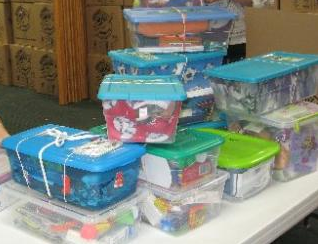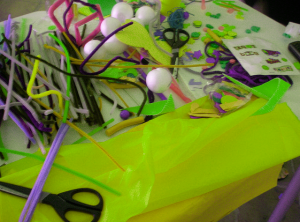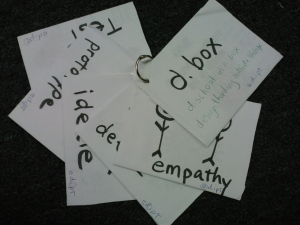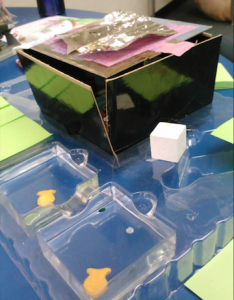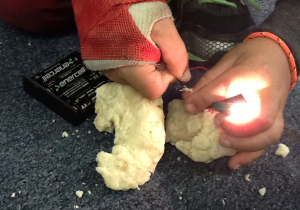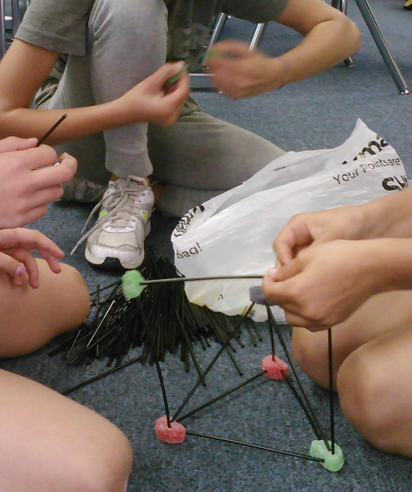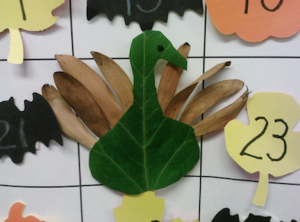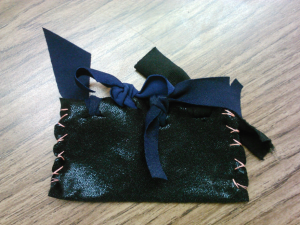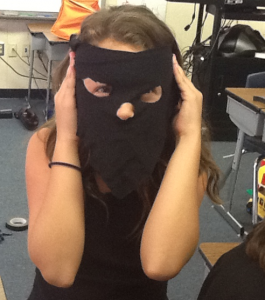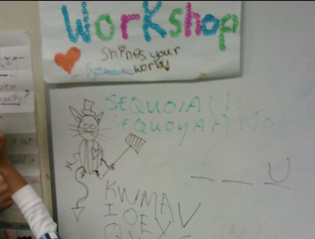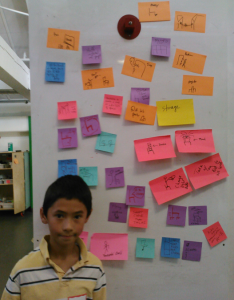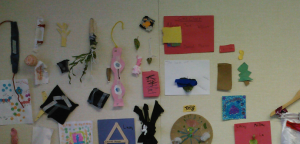Design School in a Box
Personal and Portable Design School in a box with re-usable building materials from RAFT for rapid prototyping in class and outside the classroom. Reused shoe boxes from shoe stores available also.
because ideas can come anytime and anywhere
Available to distribute 10:30 to 2 Monday to Friday except Thursdays-
contact teacher-at-mrsgillet.com for scheduling instruction, volunteer, and partnership.
I can mail box and- ship, (Pay pal)- instruct over skype.
Creative, Engaging, Portable, Personal, Educationally Sound, Scaleable, Sustainable, and Accessible
inside (sample)
and
Design Thinking Process
empathy- tell me more about- and roleplay
define- is this the right problem
with booklet and top ten tips with explanations, and on call support.
Creative Commons license (cc) 2013
<a rel=”license” href=”http://creativecommons.org/licenses/by-nc-sa/3.0/deed.en_US”><img alt=”Creative Commons License” style=”border-width:0″ src=”http://i.creativecommons.org/l/by-nc-sa/3.0/88×31.png” /></a><br /><span xmlns:dct=”http://purl.org/dc/terms/” href=”http://purl.org/dc/dcmitype/InteractiveResource” property=”dct:title” rel=”dct:type”>Design out of the box</span> by <a xmlns:cc=”http://creativecommons.org/ns#” href=”www.mrsgillet.com” property=”cc:attributionName” rel=”cc:attributionURL”>Mira Gillet </a> is licensed under a <a rel=”license” href=”http://creativecommons.org/licenses/by-nc-sa/3.0/deed.en_US”>Creative Commons Attribution-NonCommercial-ShareAlike 3.0 Unported License</a>.
Creative, Engaging, Portable, Personal, Educationally Sound, Scaleable, Sustainable, and Accessible
Students went through the rapid protyping phase of design thinking to create this
solar powered house with a koi pond using recycled material.
Design doing in action gives students opportunities to consider
interdisciplinary concepts of engineering and sustainability.
Tenacity is a crucial element of realized success.
Ideating for a chair design at Stanford Design School.
Prototyping wall: Each object represents an idea that each student chose to investigate.
Rapid prototyping allows for experimentation and avoids the trap of becoming too invested
to redesign if necessary.
Observing a video book created in workshop.
Design Thinking in and out of the classroom
17×11 paper
Today, I thought of designing/redesigning a product/process.
circle one circle one
_______________________________________________________________
Check off box when done interviewing person for empathy.
□ I can deep dive interview _____________________. (7 minutes)
name
Focus/define
______________________ needs a way to ________________________
name
because, but,Surprisingly
circle one
_______________________________________________________________.
insight. (3 minutes)
Check box when done
□ Ideate/brainstorm 5 ways on back (5 minutes).
□ Reflect and generate new solution (3 minutes)
________________________________________________________________
□ Build prototype/solution (7 minutes)
□ Share/present solution and get feedback (4 minutes)
□ Test/ implement
What worked?________________________________________
What could be improved?________________________________
Questions____________________________________________
Ideas________________________________________________
Draft- Table
Rubrics for evaluations optional
Play upbeat Music
Mini- lessons 20 min each
Practice vocab throughout, word box to review, build words
Empathy, define, ideate, prototype, test
Interview in partners 3 min, 5 min, etc.
1-4 linear 5-12 spiral
1. Product- wallet
2. Process- create a game/way to get to know each other
3. Product- Redesign Classroom map only with discussion- environment
4. Process- redesign mornings for smoother routine if you feel too rushed, forget things, etc.
ie, What did you eat for breakfast this morning? How do you get to school?
or free time list of choices to get to know each other
Discussions daily- How are you design thinking at home (out of this environment)?
Problems are really opportunities
Start using design thinking on your own problems instead of following optional lessons.
Act it out- role play, consider variables (explain) i.e. Describe your ideal weekend?
Design October costumes
5. Product toy for yourself- your choice-
6. Process for yourself- your choice- Or new healthy snacks for others, consider allergies
7. Product for others and self- your choice example i.e. pet carrier
8. Process for others and self- more exercise
Nov
9. Product for others- improve situation for those in poverty
low cost – end extreme poverty with extreme affordability
Embrace, light sources
10. Process for yourself- improve relationship- be a better friend
11. Productdesign for another culture or your choice of product to design
12. Process for others
change behavior- seeing people doing things they should not be
ie smoking
DECEMBER
13. Housing- product or process for eliminating water,food or energy waste at home
14. reduce stress- process
i.e. visiting doctor or hospital
15. product- tinkering i.e. improve fan, hairdryer,
16. process get more work and better work done
improving learning in school out of school
JAN options– improv before each lesson
Innovator’s Workshop
All Sessions – Except Session 3
Goal: Using Innovative Thinking with Children’s Choice! Learn and use vocab- word box
Feedback from group: use 2+ lessons from website, wallet, gift to highlight phases of thinking, laminate piece from Stanford highlight phases, then allow children choice for challenges, but have a mini lesson on each phase of process to continue to highlight, also include class challenges when issues arise (taking too long to get to recess etc.) Have other challenges in bag as options.
First, brainstorm options, things you are interested in, or problems that you see occurring in Workshop (boring snacks, not fun games, or . . .) Use topic or make problems challenges – frame as questions.
Or give children an option for a challenge such as:
1. Make a duct tape gift / wallet for a friend. Product
2. Create a way / game to really learn something new about your classmates. Process communicating
See others below more fleshed out:
- How do can we best get to know each other better in Workshop?
- How can we find new snacks for Workshop that children like, are considerate of allergies, and that will give you energy?
- How can we make recess and snack more fun and a better work out?
- How can you be a better friend?
Work with an Innovator’s Group to go through these steps, even if you are working on different things.
Research / Deep Dive ~ ex: roller coasters, ramps, pop up books, be interviewed about what you like, what do you like about it, have questions in bag? Do research on it with iPad.
Focus – developing empathy, ask others what they would like you to create around topic. Focus question if applicable.
Generate Ideas: Brainstorm everything new you could do with that topic with friends. Take turns and help each other.
Analyze and Choose: Pick your favorite idea, and share why. Have group vote.
Create Prototypes: Create an experience or product to share.
Seek Feedback / Make Changes: Get a friend to try it, or the group to give feedback. How can you improve?
Collaborate: Reflect on how group worked together. What went well? What could you improve?
3. Product- Redesign Classroom – discussion and map drawing only environment-
Empathy (deep dive)
Interview 8 min (2 sessions x 4 min. each) with partner
Dig Deeper 6 min (2 sessions x 3 min each) switch roles
Capture findings (3 min) goals and wishes- insights
POV 3 min –point of view
Sketch 5 ways to meet user’s needs (5 min)
Share solutions and capture feedback (10 min) 2 sessions x 5 min each
Iterate based on feedback
Reflect and generate new solution 3 min
Build solution- draw map- 7 min
Share solution and get feedback 8 min (2 sessions x 4 min each)
What worked?
What could be improved?
Questions
Ideas
Here are some particular challenges fleshed out more:
4. Challenge ~ Howdo can we best get to know each other better in Workshop?Process meeting new people or your choice of problem to redesign
Deep Dive for empathy~ Try three getting to know you games: Form a secret handshake with as many people as you can in 5 minutes. Play 2 truths and a lie with as many people as you can in 5 minutes. (Think of new truths and lie if did it first week of school.) Line up by arm span (short to long). (5 minutes) Next interview one partner about how you best like to get to know new people. Try to think of times when you have had to. What do you like? Not like? Switch roles from interviewing to being interviewed. (5 minutes) (20)
Focus/define ~ When you have classes attention, restate challenge, ask if want to focus the question in any way. (Part of Nueva process, but not sure this will really work.)
Brainstorm/ideate~ On 7 by 11 paper, with the same partner you interviewed, draw or write to brainstorm as many new ideas as you can think of to help people get to know each other better. (10)
Prototype ~ Discuss which idea or group of ideas you think would work best. Prototype that idea using prototyping kits, make something to represent it, or create the experience to present to the class. (15)
~ Present/get feedback on your prototype to the class. Tell how many minutes each group has to control time as needed given the number of groups. Get feedback, 2 strengths, goals for improvement. (15)
Implement/test ~ Using people’s suggestions for improving prototype, spend the next 30 minutes actually trying each group’s idea to get to know one another better. Reflect strengths, and what could make it work better after each one. (30)
OCT: design costumes
Improv exercise- paper clip brainstorm
- Product- Redesign toy- Your choice
Empathy (deep dive) interview and research
Focus/define
______________________ needs a way to ________________________
name
because, but,Surprisingly
circle one
_______________________________________________________________.
insight. (3 minutes)
Ideate/Brainstorm- on 7 by 11 paper
Prototype- rapid
Feedback –Like/Wish
Test/implement
- Challenge ~ How can we find new snacks for Workshop that children like, are considerate of allergies, and that will give you energy?
Process – health- design for others
Deep Dive ~ Close your eyes and taste three snacks. Then look at allergy information for 3 snacks. Look at list of allergies for that site (pull from Formstack with children that generally come, but no names). Interview each other about favorite snacks. Can you think of anything that is good for certain allergies? Do we need to add anything to design challenge question? What if you could invent snacks? (15)
Focus ~ When you have classes attention, restate challenge, ask if want to focus the question in any way. (Part of Nueva process, but not sure this will really work.)
Brainstorm ~ On 7 by 11 paper, with the same partner you interviewed, draw or write to brainstorm as many snack ideas as you can think of. (10)
Prototype ~ Select your top three, or top one in each category (regular, gluten free etc. to investigate online.) Safe? Create a prototype to present your snack ideas, and how often they should be rotated.(20)
Present ~ Present your prototype of top three snacks to the class. Explain why you think they are a great choice. Tell how many minutes each group has to control time as needed given the number of groups. Get feedback, 2 strengths, goals for improvement. (15)
Implement ~ Combine work to create our snack list for the year. How often rotate. (30)
Improv exercise- group makes a story from words students put in basket
7. Product- pet carrier (i.e. hamster cage)
Empathy interview and research
Define- POV of owner, POV of pet, POV of friend using carrier
Ideate- On 7 by 11 paper
Prototype- rapid building, show don’t tell
Feedback –Like/Wish
Test- collecting data activities, take surveys
8. Challenge ~ How can we make recess and snack more fun and a better work out? (8) Process –more exercise
Deep Dive ~ Show the class the iPad you took of them doing their various recess activities and eating snack. Have pairs interview each other about recess. What do they hate? Like? Why? How does it make them feel? (10)
Focus ~ When you have classes attention, restate challenge, ask if want to focus the question in any way. (Part of Nueva process, but not sure this will really work.)
Brainstorm ~ On 7 by 11 paper, with the same partner you interviewed, draw or write to brainstorm as many ways they can think of to make recess and snack more fun and a better workout. (10)
Prototype ~ Select one idea or a combo that you think is the best to prototype, create a model of. (15)
Present ~ Present your prototype to the class. Tell how many minutes each group has to control time as needed given the number of groups. Get feedback, 2 strengths, goals for improvement. (20)
Implement ~ Try it, model recess using your new ideas, 10 minute discussion after, what worked well, ideas to make even better. (30)
NOVEMBER
Improv exercise- word at a time
9. Product- to help the poor- design for others
(Extreme affordability to fight extreme poverty).
Empathy interview and research
Define- POV
Ideate- role play then draw on on 7 by 11 paper
Prototype- rapid
Feedback –Like/Wish
Test
10. Challenge ~ How can you be a better friend?Process- communication
or your choice of problem to redesign
Deep Dive ~ Have pairs interview each other what is a good friend, not so good friend. What is their best friend experience? Their worst? (10)
Focus ~ When you have classes attention, restate challenge, ask if want to focus the question in any way. (Part of Nueva process, but not sure this will really work.)
Brainstorm ~ On 7 by 11 paper, with the same partner you interviewed, draw or write to brainstorm as many ways they can think of to be a better friend. (10)
Prototype ~ Choose one strategy or a group of them to prototype or create a model of.(15)
Present ~ Present your prototype to the class. Tell how many minutes each group has to control time as needed given the number of groups. Get feedback, 2 strengths, goals for improvement. (20)
Implement ~ Actually try it, get feedback. Write a book about ideas for being a better friend. Each person write one page. 30)
11. Productdesign for another culture or your choice of product to design
Empathy interview and research (immigrant?)
Define
Ideate on 7 by 11 paper
Prototype- rapid
Feedback –Like/Wish
Test
Improv exercise- Freeze
12. Process for others
change behavior- seeing people doing things they should not be ie smoking
DECEMBER
13. Housing- product- others
14. reduce stress- process (i.e.) visiting doctor hospital
15. product- tinkering (i.e.) better fan, hairdryer,
16. process get more work and better work done
improving learning in school out of school
JAN
Create your own world- map it.
vehicles to transport to these worlds
Create your own company.
Tinkering school
https://dschool.stanford.edu/groups/k12/wiki/3091c/Improv_activities_for_Design_Thinking.html Improv activities for design thinking
0. Yes, BUT… vs. Yes, AND: Have people form pairs or small groups (3-4) and tell them they are going to plan an activity (a trip, a party). The first round, every time someone proposes an idea, someone else should answer with “Yes, BUT…(reason why that is not going to work)”. On the second round, the response should be “Yes, AND… (add something that builds on the first idea)”. Debrief about the group energy and what kind of ideas came out in each round.
1. Alphabet. Everyone stands in a circle. The goal is to recite the alphabet one person at a time, in no particular order. The catch is that if two (or more) people say the same letter at the same time, you have to start over from “A”. It makes everyone be very aware of everyone else in the group. You have to really concentrate and look at everyone to make the decision of whether to chime in with the next letter.
2. Sound ball: Passing an invisible ball making a sound to someone in the circle, that person catches the ball making the same sound and then passes it to someone else making a different sound). You may introduce a second sound ball at some point.
3. People to people: people walk around at random until the organizer says “people to people”; then you lock one arm with whoever is next to you at that moment. Then the organizer mentions two body parts, for instance “elbow to toe”. The 2 people have to touch their elbow with the other person toe and freeze in that position. Break and repeat. You can also do it with 3 or 4 people at a time.
4. Machine: One person begins a repetitive movement and a sound that goes along with it. The second person has to do a repetitive movement and sound that somehow connects to the first person. One by one, all students add to the “machine”, creating a huge apparatus and symphony of sounds. You can make for instance a “peanut butter and jelly sandwich-making machine” 🙂 The leader can slow the pace down or speed up until the machine disintegrates to end the activity.
5. Word-at-a-time
(i) A group of 4-5 students sits facing the rest of the class. They are collectively playing one character, who is a guest on a talk show. One person (facilitator) is the “talk show host” interviewing this character. The audience suggests a profession or expertise for the character (i.e. professional scuba diver, foot surgeon, astronaut, mother of 20 children, etc.). The facilitator asks questions and the “guest” has to answer one word at a time. Each of the 4-5 people adds a word, creating word by word an answer to the question. The audience can also ask questions of the “talk show guest.”
(ii) In a circle, people say one word at a time; when the group feels the idea/sentence is complete they put their hands together and say “yes, yes, yessss” (see Liz Gerber’s article).
6. Growing and shrinking scene: One student acts out a scene in the middle of the room (for example, pretend he/she is fishing). At one point, the facilitator calls “freeze!” and a second person comes in, creating a different scene based on the position of the first person. At “freeze!”, a third person comes in and changes the scene again. This process can then be reversed and have people leave, returning to the previous scene, until there’s only the initial person left.
7. Freeze!: people walk around the room paying attention to others; when someone sees a person freeze (they get to freeze whenever they want), they freeze too (variation: you have to freeze in same position; how fast can we get the group to react?).
8. The enemy/damsel in distress and the superhero/evil mastermind: People walk around the room briskly, without a particular direction. The leader tells people to identify one person (person A), without that person realizing. That person will be their worst enemy. Repeat, and the next identified person -B- will be their superhero. When people resume walking this time, their goal is to be protected from their enemy by their superhero, that is, to be in between the two at all times. When the leader yells freeze and asks how many people met the goal, and to point at the two selected people. The end. Variation: person A is the damsel in distress and B is the evil mastermind. The goal is to be protecting A at all times.
9. The equilateral triangle: same mechanic as # 8, but the end goal is to form at all times an equilateral triangle between you and the other 2 people you identified.
10. Naming frenzy: Do a, b, c in sequence:
a. everyone walks around the room, pointing at things (“do not point at people”) and naming them out loud.
b. same as a, but starting with the floor and naming it “floor”; then the next thing you point at you name it “floor” and the next thing you name it the name of the previous thing. If you get stuck, point at the floor and start over.
c. same as a, but when pointing at things, call them anything but what they are (doesn’t matter if what comes out of your mouth makes no sense or is not even a word; “speak before thinking”). And “point emphatically, with your whole body”.
After this you may debrief and ask if they are more aware of the room, if the rooms looks brighter, etc.
11. String of pearls: One person stands and tells the first line in a story (anything). The second person stands at the opposite end and tells the end of the story. Now people fill in at any point in between the two ends and complete another part of the story. Each time a ‘new pearl’ enters the chain, everyone in line repeats their line in the order in which they are standing, until the story is completed (ie, there is no more people left).
12. Body movement evolution: in a circle, someone makes a movement and sound (something like a twitch); the next person imitates, incorporating whatever “mistakes” the person made in copying the previous movement. This can go on for as long as you want around the circle.
13. Rock, Paper, Scissors War: Starting in pairs, people play rock, paper, scissors with one another. The winner moves on, the loser, becomes the winners “biggest fan.” By the end the two people will play for the title each with a massive cheering section.
14. Shake and Unravel: The first goal is to meet as many people as possible. You meet by shaking hands. In this game, you cannot stop shaking hands with one person until you start shaking hands with another person. At some point during the game, call out “stick” which means that they can no longer let go of anyone’s hand (explain this point while giving the original instructions). Have the group continue for a few seconds until everyone is holding two separate peoples’ hands. Pause the game and inform them that they have just created a human knot, and that they must untangle themselves.
https://dschool.stanford.edu/groups/k12/
Improv notes
silent improve
dub
conversation sentence in abc order
design thinking journal
no burnout
joy
risk taking
experimental learning
talk show to get to know
